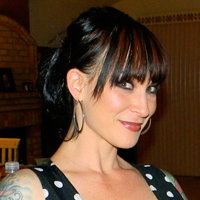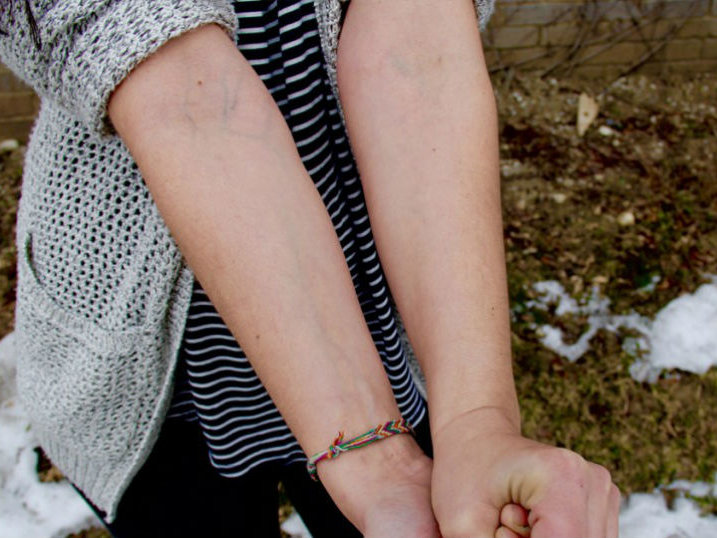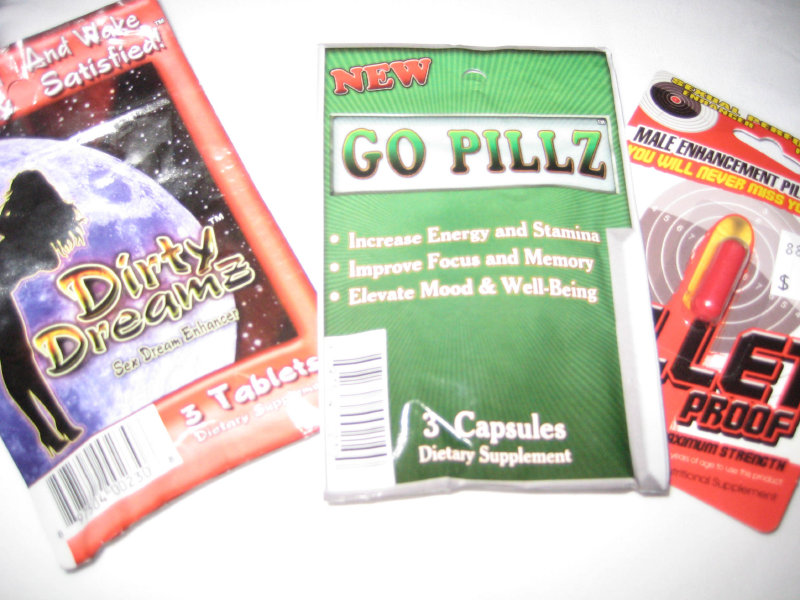Linda Lenz has got a message for heroin: your days are numbered taking hold of our children.
Lenz, a Muskego resident who lost her son Tony to a heroin overdose in February 2013 is amassing an army to defeat heroin through education and open forum discussion. She is in part reluctant to accept praise for her efforts and the inspiration she provides.
"If you had told me four years ago that this would be my life, I would have said I would have been catatonic or dead after these tragedies. But, I keep going because I hate injustice and it puts me in warrior mode. It is an energy we have all fallen under and we have to see it through," she says.
Lenz is on the panel of an upcoming summit to highlight the "Heroin Crisis in the Burbs" that will take place on Wednesday, May 7, at The New Berlin West Performing Arts Center and on Monday, May 12, at The Muskego High School Performing Arts Center.
Both programs feature a resource fair that begins at 6:30pm and a presentation at 7 p.m. The purpose is to educate parents about the growing danger of prescription opiates and heroin addiction children face.
For more details be sure to visit Lenz’s StopHeroinWI Facebook Page. (Pre-registration is suggested but not requiredand walk-in availability may be limited, so to sign up – please click HERE.)
Below is a transcript of a conversation I had with Lenz that should be required reading for all parents, but also for anyone concerned about themselves, family members or friends. Lenz generously and extensively answered five questions that will at the very minimum stimulate a quest to know more.
Lindsay Garric: Your Facebook Page "Stop Heroin WI" has 6,506 likes and is constantly growing. The mission is to "Stop children from trying heroin – even once." You have clearly hit a nerve. Please give me a little background information on why this mission is your passion.
Linda Lenz: We lost our older son, Canton, on Aug. 10, 2010 to a genetic disorder called Vascular Ehlers-Danlos. It is a connective tissue disorder that causes internal organs to dissect and basically fall apart. We knew Canton was ill for 11 years before his death from an aortic dissection at the age of 30. Tony was our younger son by 10 years. The brothers adored each other, but for 11 years our family lived in a state of fear that any day may be Canton’s last.
Tony was the healthy one. He was a kid who asked to get his haircut every other week, who had a 4.0 report card in 10th grade, a quick wit and a loving personality. He was never a bother. Looking back, he made sure he was not a bother because of Canton’s illness.
The day we traveled to California to scatter Canton’s ashes, Tony was curled in a ball crying on the hotel room bed. He told me he was addicted to heroin. My heart dropped. I did not understand and I felt all alone. My words were, "There is help, we will get help," but my heart pounded as if I had just heard he had been sentenced to death.
Tony went to rehab in California. Rehab "lite" I would call it. We ended up staying for three weeks and then he was released as an outpatient to the Dewey Center in Milwaukee. Did it work? Who could I ask? I didn’t know any parents of heroin addicts. His friends from high school didn’t know much. Actually, it became clear that his whole group of friends had changed during his senior year. We had been focused on Canton and didn’t investigate the reason for the change.
Tony relapsed. We sent him to Koinonia in Rhinelander. He was resistant. Withdrawals are so painful and heroin changes the brain chemistry. I knew my son was inside there, but I could not see him. Heroin addiction is a disease according to the National Institute of Health.
Tony then returned home and began working out, he got a job, met a wonderful new girlfriend who was in school to be a nurse. He was healthy, but we were always worried.
On Feb. 12, 2013 he went out to a restaurant / bar with his beautiful girlfriend and friends. He drank. He did not drive and his girlfriend stayed over at our house. In the morning she took Tony to his car and they kissed goodbye – for the last time. At 10 a.m. on Feb. 13, 2013 my son was dead in a Milwaukee parking lot. He died of a heroin overdose.
LG: You are huge a part of the "Heroin Crisis in the Burbs" Summit on May 7 and 12. What do you hope to achieve with this presentation?
LL: I could write a book on what I didn’t know. After Tony passed away, a friend got me on WTMJ news. I told my story. I knew that with that sort of media attention I needed a way to connect with people – people like me.
I quickly put up a Facebook Cause Page called "Stop Heroin WI." The day after my interview - the page was inundated with views, likes, comments,etc. I was overwhelmed. Nearly 28,000 people viewed the page that week. How could something this huge have been such a secret to me? I was on a mission to find out.
Finally, while producing a video to warn parents / students about heroin - I learned the secret. The landscape of drugs has changed. Prescription pills are now the drugs of choice. They are easier to get than a six-pack, odorless (unlike marijuana) and easy to hide.
Prescription pain pills are opiates. They are synthetic heroin. Heroin made in a lab. Using them just once can make some kids opiate addicts. Using them for a week or two can make nearly all of them opiate addicts. The leap to heroin is not a leap at all. With one oxycodone costing about $60, street heroin becomes a cheap alternative. And, opiate addicts will do anything to avoid the pain of withdrawal. That is how easily a heroin addict is made in this day and age.
LG: Your activism is growing. You are joining forces with the CJ Lomas Foundation. Please tell me more about this and how you hope this furthers the cause.
LL: The StopHeroinWI Facebook page has reached people nationally and around the world. We are in the process of building StopHeroinNow.org. It will be a project dedicated to education, recovery for addicts and help for parents and loved ones of addicts. It will be launched nationwide and people will have the ability to donate to help those in need. The money will help fund scholarships for rehabilitation and educate students from 5th grade and up about the dangers of pain pills and heroin. The CJ Lomas Foundation has been working along side Stop Heroin WI and StopHeroinNow.org to raise money and awareness.
We are now joining efforts so that fund raising projects can be collected through the CJ Lomas Recovery Foundation a 501 (c) (3)charitable organization and distributed to those in need. (Please check the StopHeroinWI page for updates on the launch of StopHeroinNow.org.)
LG: You have told me your focus is on "the pills." Why is this an important place to hone in on?
LL: According to law enforcement officials, it is rare to find a home that does not have some prescription pain pills in the medicine cabinet. They are accessible and not normally kept under lock and key. Kids actually have parties with the drugs they steal from parents, grandparents and even their own prescriptions. The parties are called "Skittle parties" or "Pharming parties."
The bottom line is - the kids are using these drugs as a mainstream way to "party" in high school and even in junior high. They do not realize that they will become opiate addicts and then heroin addicts. Once you are a heroin addict you are never recovered. You are "in" recovery the rest of your life. These kids are choosing to live in a prison that they do not even know they are creating by taking the pills.
LG: Three part question here. How early can we start educating our children about heroin and opiates? Where can parents turn for early education for themselves and resources - right now? Where do you tell addicts to turn?
LL: Respected health professionals have told me that as young as 12 is age-appropriate to start education because by 14 children are already experimenting with drugs.
Unfortunately, there are not many places parents can turn to for this type of education. Many parents say "not my kid" and don’t even realize that this is something they need to know. We are trying to change that. By coming together and making free resources available to parents, families, teens, addicts who are actively using and addicts in recovery - we will try to fill this very enormous gap in awareness and medical care for this disease.
Additionally, when our web page is launched it will contain a tab called "I Need Help" that will focus on connecting those in trouble with the help they need. It will be hosted and maintained by an administrator from StopHeroinWI, Angela Utschig of Wisconsin Intervention Services. We are also partnering with two young men who are in recovery, Anthony Alvarado and Douglas Darby. They are making a big impact on kids across Wisconsin through their Rise Together movement. They are electric when they speak to groups about their own lives and recovery.
We always ask any audience to tell someone they know, "Prescription Pain Pills are Synthetic Heroin!" We ask them to spread the word to another and another and pay it forward until we are able to turn the tide of addiction.
Lindsay Garric is a Milwaukee native who calls her favorite city home base for as long as her lifestyle will allow her. A hybrid of a makeup artist, esthetician, personal trainer and entrepreneur all rolled into a tattooed, dolled-up package, she has fantasies of being a big, bad rock star who lives in a house with a porch and a white picket fence, complete with small farm animals in a version of Milwaukee that has a tropical climate.
A mishmash of contradictions, colliding polar opposites and a dash of camp, her passion is for all pretty things and the products that go with it. From makeup to workouts, food to fashion, Lindsay has a polished finger on the pulse of beauty, fashion, fitness and nutrition trends and is super duper excited to share that and other randomness from her crazy, sexy, gypsy life with the readers of OnMilwaukee.com.






